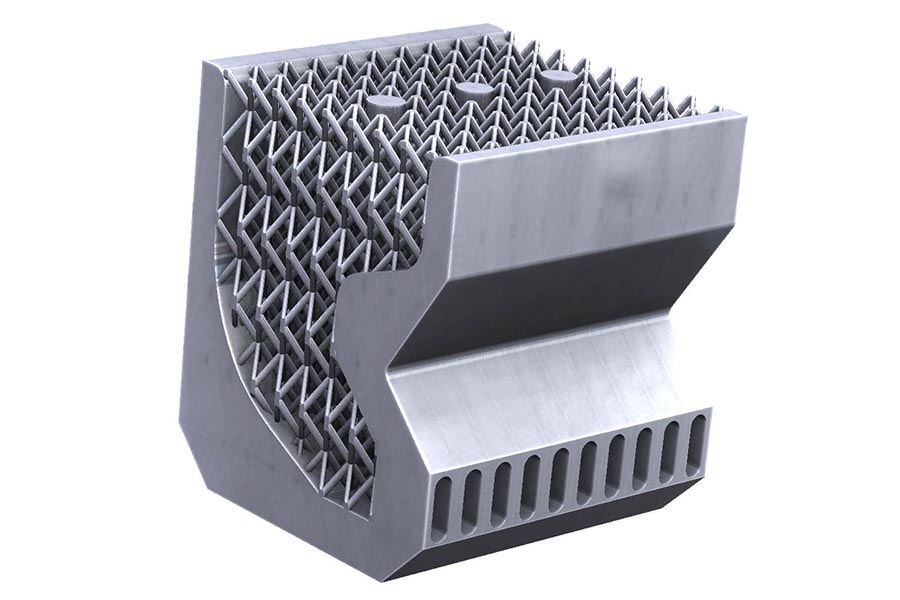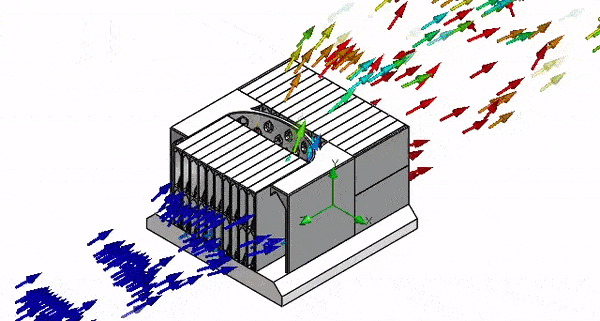A team of mechanical engineering students at Purdue University has designed a highly-efficient, award-winning 3D printable heat sink.
The sharkskin inspired design took the #1 spot at the Virtual Student Heat Sink Design Challenge, a U.S. university competition organized by the ASME K-16 Committee and the Institute of Electrical and Electronics Engineers (IEEE). The challenge was also backed and sponsored by global conglomerate GE.

The Heat Sink Design Challenge
The design challenge prompted teams of engineering students with a theoretical heat source and dimensions, leaving them to design a 3D printable heat sink – a device that transfers heat away from electronic components to keep them cool. The teams were told that they would be judged on their design’s ability to remove heat, the total manufacturing cost, and the amount of raw material it would take to produce.
Soumya Bandyopadhyay, a Ph.D. student on the Purdue team, states: “The key to having high-performance electronic devices is keeping them cool. In the last decade or so, additive manufacturing has enabled us to come up with innovative designs for new advanced thermal solutions.”
After the first stage of the competition, the top six teams had their designs physically 3D printed in aluminum on a GE Additive Concept Laser M2 3D printer. The heat sinks were then put to the test under controlled conditions at Oregon State University to see if their real performances were up to par with the simulations.
When the dust settled, it was the Purdue engineers that were crowned the winners. Their design had performed better than expected, cost less than initially thought, and even did a great job of minimizing the amount of aluminum used.
The Purdue design
The four engineers that made up the Purdue team – Soumya Bandyopadhyay, Julia Meyer, Adeline Naon, and Saeel Pai – started their journey back in January. The first few days were spent brainstorming with pen and paper, and the team decided to draw inspiration from nature. It was then that they settled on a shark skin-inspired geometry for their heat sink.
Sharkskin has a very characteristic surface texture. It features millions of microscopic spike-like projections called denticles, each playing their part in reducing drag so the shark is able to swim with less water resistance. Seeing as the laws of fluid dynamics apply to both liquids and gases, the Purdue engineers added denticle-like shapes to the walls of their design. This had the effect of reducing pressure drop and inducing air mixing.
The engineers also added Formula 1-inspired vortex generators to the front and back of their heat sink. These “swirlers” intentionally generated turbulent flow in the body of the design, maximizing heat transfer between the air particles. Finally, to expel hot air from the heat sink, the students implemented a ‘respirator section’ between the two vortex generators. Resembling the air sacs found in a human lung, the respirator takes in cool air from the surroundings and expels heated air through a perforated ramp.

Researchers from the University have previously worked on a method of 3D printing concrete wind turbine parts for offshore use. The research ultimately aims to 3D print concrete anchors which cost just a fraction of the price of their steel counterparts.
Engineers from the University have also recently used 3D printing to develop trackable microrobots. The novel color-based patterning method is expected to make the robots suitable for biomedical applications such as non-invasive diagnosis and drug delivery, where individual tracking is key.
The 4th annual 3D Printing Industry Awards are coming up in November 2020 and we need a trophy. To be in with a chance of winning a brand new Craftbot Flow IDEX XL 3D printer, enter the MyMiniFactory trophy design competition here. We’re happy to accept submissions until the 30th of September 2020.
Subscribe to the 3D Printing Industry newsletter for the latest news in additive manufacturing. You can also stay connected by following us on Twitter and liking us on Facebook.
Looking for a career in additive manufacturing? Visit 3D Printing Jobs for a selection of roles in the industry.
Featured image shows Purdue’s 3D printed heat sink. GIF via Purdue University.


